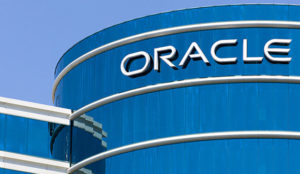Oracle’s continued strides in the tech space say a lot about perseverance and deep pockets. It was a darling of the 20th-century tech era, rising from a startup in the database wars and becoming the sole surviving independent database company. But at some point, success leveled out its rise, and it became just another big company.
Then came the challenge of cloud computing. Oracle gave the rest of the industry a head start of more than a decade before throwing in the on-premise towel and joining the migration to the cloud. During that time, it famously denigrated cloud computing. But even then, pronouncements by founder and CEO Larry Ellison had the quality of protesting too much.
All the while Oracle was pushing a big iron computer room complex as IT’s once-and-future reality, it also had developers sprinkled in with leading cloud computing startups, both in an effort to support their truly large database requirements and to gain experience in the very real event cloud computing might become something.
A few years ago, Oracle remade itself as a cloud company. Although its initial forays into the cloud resembled a polar bear learning the tango, Oracle became good at it. The company used a big bankroll (spending more than $6 billion in R&D in 2020 alone), a dominant position in the market, and the experience, however rusty, of being a startup to chart a new course.
Most importantly, in retrospect, Oracle began doing things only a company like it could do by developing a more integrated approach to hardware and software.
Database Performance
For decades the proof of database performance was how well the software ran against standardized benchmarks; and that performance was largely focused on the CPU. Every time a bigger and faster CPU became available was an opportunity to retest and re-establish bragging rights.
That was smart because the CPU was the thing that changed most between upgrades, and it was the way database competitors operated in the RDBMS heyday. However, it ignored important changes in hardware over time.
It’s no secret that databases run best when they access data from disk least; that’s why they buffer as much data as possible. Disks run at millisecond speeds while data in memory can be accessed in nanoseconds. The difference is appreciable in organizations with thousands of users hitting the same data. Hence getting its database into memory became an early challenge that Oracle took on incrementally because moving the database into memory required hardware as well as software.
The hardware, at least initially, came courtesy of the company’s acquisition of Sun Microsystems and new products like Exadata. The in-memory autonomous database arrived only in the last couple of years, but it is now what runs Oracle’s cloud computing infrastructure and enables the company to boast gaudy benchmark results against upstart competitors whose initial intent was to put Oracle out of business.
These days the intent seems to be finding ways to coexist. Lesson learned: never mess with a polar bear with the gumption to learn to tango.
Roving Edge Infrastructure
All of this is to set a continuum for Oracle’s announcement of REDs or Roving Edge Devices, which are a big part of the Roving Edge Infrastructure. Last week, the company announced its initial customer target: Oracle U.S. Government and DoD Cloud regions
REDs are intended to provide cloud services in remote and hostile environments and, therefore, are built to conform with MIL-STD specifications for shock, vibration, and temperature. They include ingress protection and electromagnetic interference shielding (EMI). A roving edge cluster is configurable into 5 or 15 nodes, and each 38-pound box contains 40 OCPUs.
If you must get into these weeds, go here and you’ll find, “An OCPU is defined as the CPU capacity equivalent of one physical core of an Intel Xeon processor with hyper threading enabled, or one physical core of an Oracle SPARC processor. For Intel Xeon processors, each OCPU corresponds to two hardware execution threads, known as vCPUs.” Blah!
There’s more to REDs too, like end-to-end data encryption for those hostile environments, but my point is that in its effort to be competitive in the cloud, Oracle did some very smart things to goose performance for a new generation of demand. That demand could only be met through solutions that incorporate hardware and software performance improvements, and Oracle was one of a tiny group of big companies that could do the job.
What’s next is kind of exciting. You can figure that REDs can be deployed to ships at sea and oilfields in the middle of nowhere since their Internet connectivity needs can be intermittent, and beyond that, who knows?
Several decades ago, we took a minicomputer out of the computer room, put it into a small box, and voila, we had a machine that didn’t require air conditioning. For the first time, we had a box we could take to tradeshows for in-booth demos. It was a radical departure from handing out literature. The rooms — even the big ones — got a little warm, but nobody minded.
All this notwithstanding, processing power availability always leads to software benefits. However, the company has been at this for a while, so the CX announcements it made last week show an interesting approach to already consuming some of the processing power available.
This is especially evident in areas like voice: A new digital assistant enables users to talk to their CRM systems and use voice commands for things like creating follow-up tasks on mobile devices.
There’s also a raft of functionality that makes apps smarter by intuiting users’ needs. For instance, it displays past customer behavior to help users make smart to-do lists.
From the product announcement, we also get:
- Agent Onboarding: Reduces onboarding time and agent turnover by providing agents with an intuitive console that mimics popular consumer apps.
- Conversational Feed: Accelerates issue resolution and increases customer trust by presenting agents with critical details on customer interactions from different channels in one unified feed.
- Holistic Account View: Provides agents with access to all customer data — from across departments ranging from finance and fulfillment to marketing and sales — so they can solve issues without having to transfer the customer to another department.
There’s a lot more, of course, but this is not intended to be an Oracle ad.
Gale of Creative Destruction
To summarize, we’re witnessing the fruits of one company reinventing itself by taking a hard look at what it made and where its customers needed to go.
Interestingly, this could be one of the last times you see such a long rollout because in the cloud, you innovate daily, perhaps hourly, if some of my research data is accurate.
Regardless, Oracle is demonstrating economist Joseph Schumpeter’s theory of creative destruction, that every innovation rests on the shoulders of those that came before and eliminates some of them.
Ultimately, this isn’t a technology story at all. It’s partly a management parable, but more importantly, it’s about making the hard decisions to embrace Schumpeter in the first place.



























































